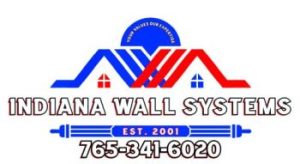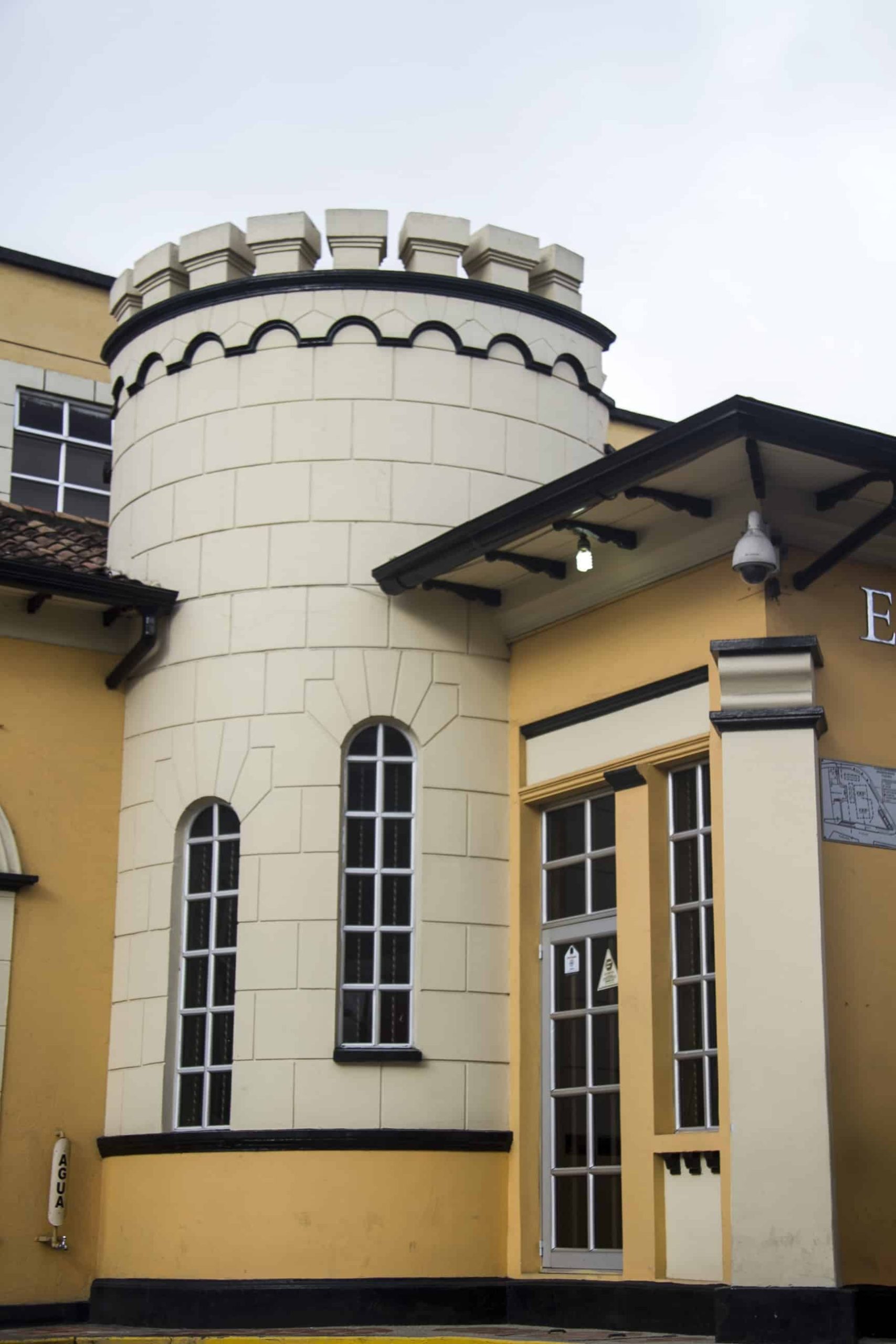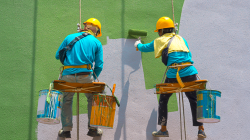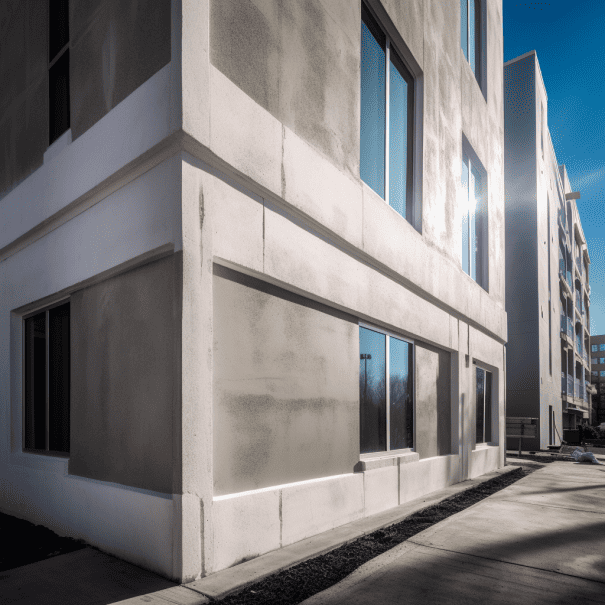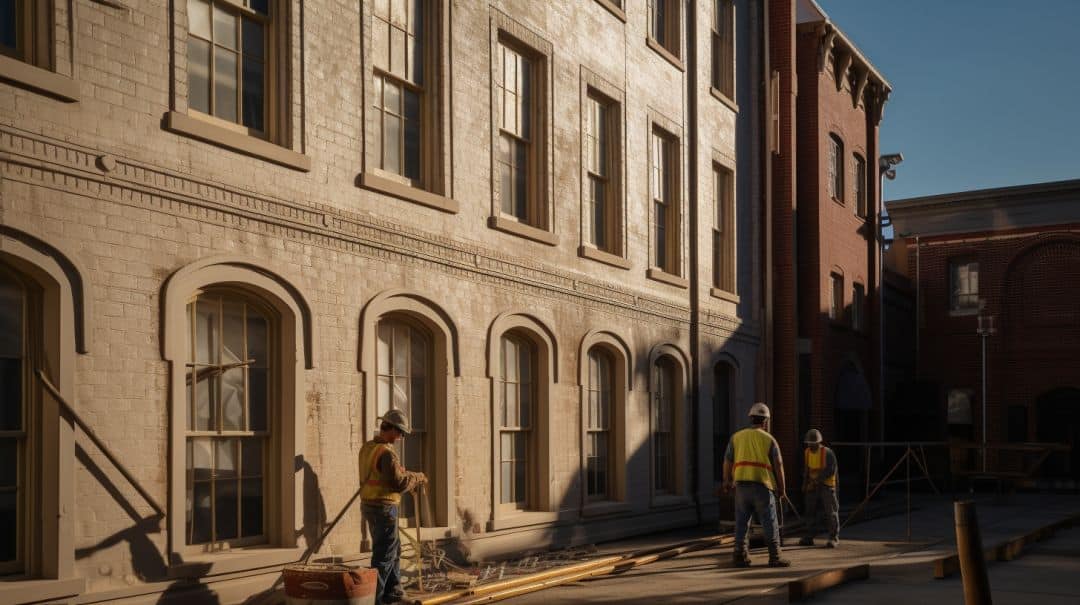Master the Lingo: Understand EIFS Like a Pro
EIFS terms can be confusing for homeowners and builders alike. EIFS stands for Exterior Insulation and Finish System, a popular wall cladding choice. This guide will explain common EIFS words in simple terms.
Ready to learn the lingo?
Key Takeaways
- EIFS stands for Exterior Insulation and Finish System. It wraps buildings in insulation to save energy.
- EIFS has four main parts: insulation board, base coat, mesh, and finish coat. Each part plays a key role.
- There are two types of EIFS: Barrier EIFS and Water-Managed EIFS. Water-Managed EIFS is better at stopping moisture problems.
- Common EIFS terms include bird holes, bulges, cracks, kickout flashing, and expansion joints. Knowing these helps spot issues early.
- Regular checks and proper care help EIFS last longer and work better. Homeowners should inspect their EIFS at least twice a year.
What is EIFS?
EIFS stands for Exterior Insulation and Finish Systems. It’s a wall cladding that insulates and protects buildings from the outside.
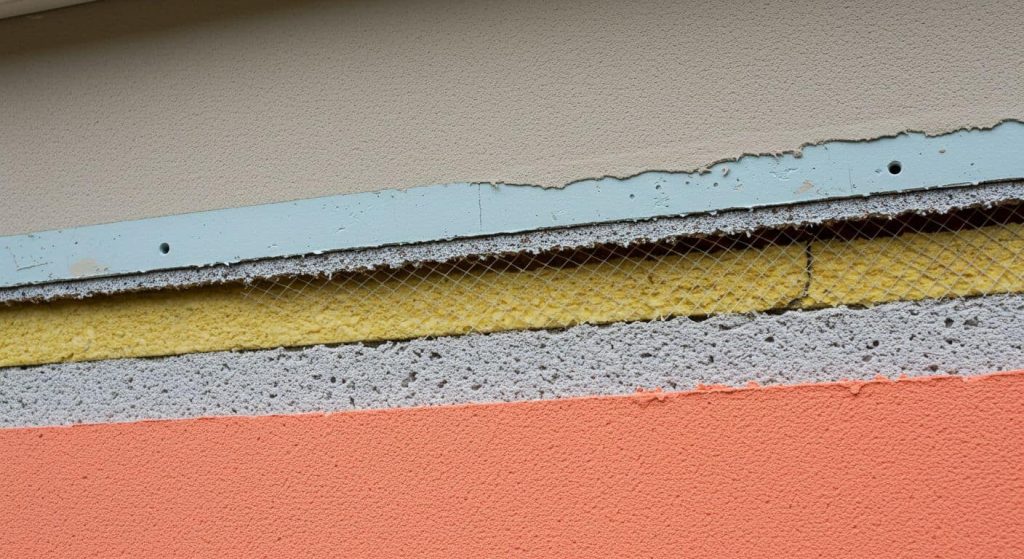
Definition of EIFS
EIFS stands for Exterior Insulation and Finish System. It’s a type of wall covering that wraps buildings in a blanket of insulation. This system uses foam boards, special coatings, and a final layer that looks like stucco.
EIFS helps keep buildings warm in winter and cool in summer.
EIFS is like a protective jacket for your home.
The main parts of EIFS are the insulation board, base coat, mesh, and finish coat. Each layer plays a key role in making the system work well. Next, let’s look at the purpose of EIFS and why it’s used in construction.
Purpose of EIFS
EIFS serves as a shield for buildings. It keeps them warm in winter and cool in summer. This system wraps around a structure like a cozy blanket. It stops heat from escaping and blocks outside air from getting in.
EIFS also guards against rain, snow, and wind.
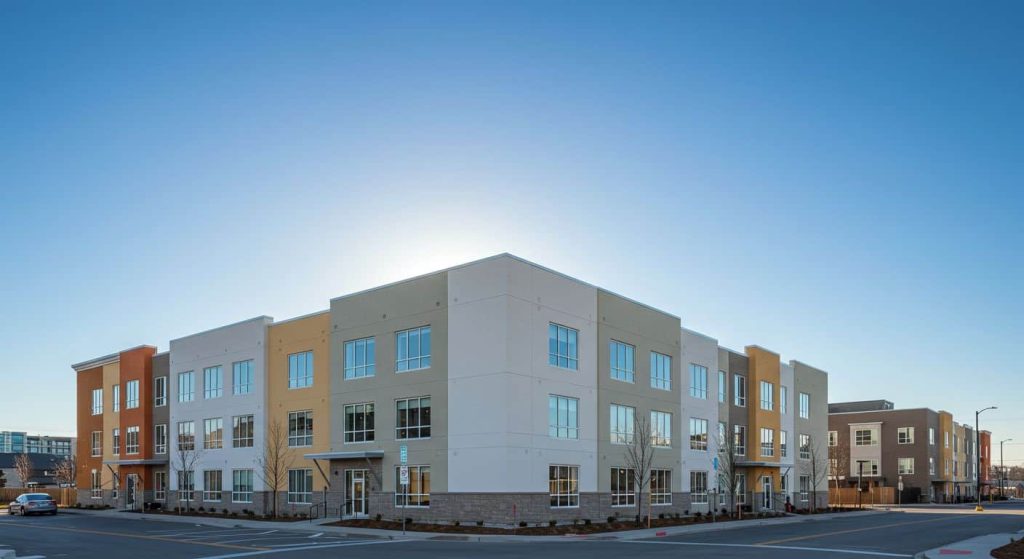
Beyond protection, EIFS makes buildings look great. It offers many design options. Builders can shape it into different forms and textures. They can paint it in various colors too.
This flexibility lets architects create unique and eye-catching buildings. EIFS helps make structures both safe and beautiful.
Common uses of EIFS in construction
EIFS finds wide use in both new builds and renovations. Builders often apply it to the outer walls of offices and shops to boost energy savings. It’s also a top pick for giving old buildings a fresh look and better insulation.
Many homeowners choose EIFS for their houses too. They like how it makes their homes look nice while keeping them warm in winter and cool in summer. This cladding system offers a mix of good looks and high performance that many find hard to beat.
Architects love EIFS for its design freedom. They can shape it into curves, angles, and textures that other materials can’t match. This makes EIFS great for creating unique building fronts.
It’s also used to make fake stone, brick, or wood looks without the high cost. In areas with harsh weather, EIFS helps protect buildings from wind, rain, and temperature swings. Its durability and low upkeep needs make it a smart choice for many projects.
History of EIFS
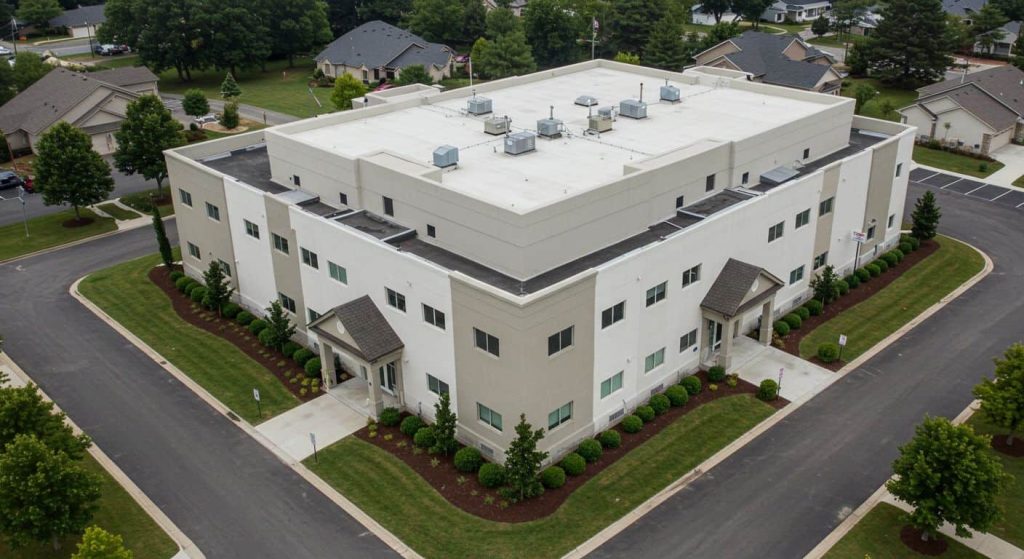
EIFS first appeared in Europe after World War II. Builders needed a quick, cheap way to fix damaged buildings. In the 1960s, EIFS came to North America. It gained popularity in the 1970s and 1980s.
People liked how it looked and how well it saved energy.
EIFS revolutionized the construction industry with its energy efficiency and design flexibility, says John Smith, a veteran builder.
At first, EIFS was a barrier system. It kept water out but didn’t let it drain. This led to problems in some buildings. In the 1990s, makers improved EIFS. They added ways for water to drain.
This made EIFS safer and more reliable. Today, EIFS is common in both homes and big buildings.
Composition of EIFS
EIFS has four main parts that work together. Each part plays a key role in how EIFS works. Keep reading to learn more about these parts and how they protect buildings.
Insulation Board
Insulation board forms the core of EIFS. It’s made from polystyrene foam, either expanded or extruded. This board sticks to the wall and gives EIFS its insulating power. Most EIFS use one-pound expanded polystyrene for Class PB or MD systems.
But some Class PM systems use extruded polystyrene instead. The foam is light yet strong, helping to keep buildings warm in winter and cool in summer.
This board also shapes the look of the final wall. Installers can cut and shape it to create different designs. They often carve it to make decorative elements like cornices or window trim.
The foam’s flexibility lets architects dream up unique facades without heavy materials. It’s a key part of what makes EIFS so versatile for both homes and big buildings.
Base Coat
After the insulation board, we move to the base coat. This layer is key in EIFS. It’s a mix of cement and polymers. Workers spread it on the insulation board. Then, they press a mesh into it.
This mesh is often made of fiberglass.
The base coat does two big jobs. First, it makes the wall stronger. Second, it helps stop water from getting in. A good base coat is about 1/8 inch thick. It needs to dry fully before the next step.
This can take up to 24 hours, based on the weather.
Reinforcement Layer
The reinforcement layer is a key part of EIFS. It’s made of a special mesh that goes into the base coat. This mesh comes in different weights. Light mesh is about 4.5 ounces per square yard.
Heavy mesh can be 15 ounces or more. The heavier mesh is used in areas that need extra strength.
This layer helps EIFS resist cracks and impacts. It works with the base coat to form a tough shell. This shell protects the insulation board underneath. The mesh is usually made of fiberglass.
It’s flexible but very strong. Builders embed it fully in the base coat for the best results.
Finish Coat
The finish coat is the top layer of EIFS. It gives the wall its color and texture. This coat is made of a special mix that includes acrylic and other materials. Builders apply it over the base coat to create the final look.
Finish coats come in many colors and textures. You can pick from smooth, rough, or patterned finishes. This layer also helps protect the wall from weather and damage. It’s tough enough to stand up to rain, wind, and sun for years.
Types of EIFS
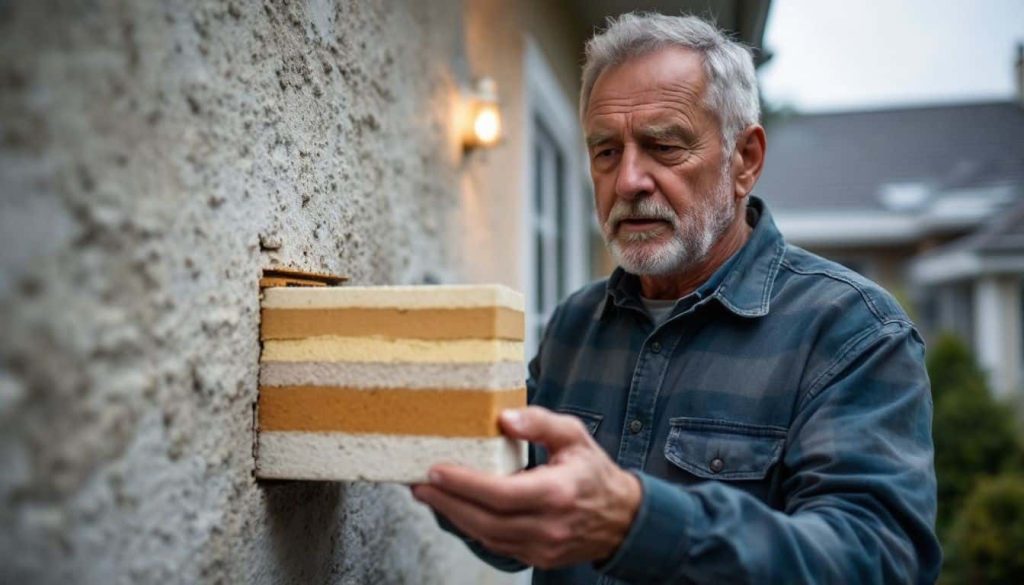
EIFS comes in two main types. Barrier EIFS and Water-Managed EIFS offer different ways to protect buildings from moisture.
Barrier EIFS
Barrier EIFS was the first type of synthetic stucco system. It uses a single layer to keep water out. This layer acts as both insulation and finish. Builders apply it right to the wall without a gap.
But this design can trap moisture if water gets in.
Water-Managed EIFS came later to fix moisture problems. This newer system has a way for water to drain out. Let’s look at how it works differently from Barrier EIFS.
Water-Managed EIFS
Unlike Barrier EIFS, Water-Managed EIFS offers better protection against moisture. This system has a special layer that helps water drain away. It’s like a raincoat for buildings. The drainage plane catches any water that gets behind the surface and guides it out.
Water-Managed EIFS is also known as EIFS-MD. It’s a smart choice for areas with lots of rain or snow. This type of EIFS keeps buildings dry and cozy. It helps stop mold and rot, making homes and offices safer and more comfy.
The Art and Science of EIFS
EIFS blends art and science in building design. It offers a wide range of colors and textures. Builders can create unique looks for homes and offices. They can make smooth walls or add depth with patterns.
EIFS also allows for custom shapes and details. This gives architects more freedom to bring their ideas to life.
EIFS isn’t just about looks. It’s a smart system that protects buildings. The layers work together to keep out water and save energy. The outer coat resists weather and impacts. The inner layers add insulation and stop air leaks.
This mix of form and function makes EIFS a top choice for many projects. Next, we’ll explore some common terms used in the EIFS world.
Common EIFS Terms Explained
EIFS has its own language. Let’s break down some key terms you’ll often hear. Read on to boost your EIFS know-how!
Bird Holes
Bird holes are small, round gaps in EIFS. They form when air gets trapped during the finish coat application. These holes can let water in, causing damage to the system. It’s crucial to spot and fix bird holes early to keep the EIFS working well.
Pros use special tools to fill bird holes. They apply a matching finish to blend the repair with the rest of the wall. Next, we’ll look at another common EIFS issue: bulges.
Bulges
Bulges in EIFS can spell trouble. These swollen areas often mean water has gotten behind the system. Water can make the foam board swell up, causing the surface to push out. This creates an unsightly bump on your wall.
Bulges need quick action to stop more damage.
Fixing bulges isn’t easy. You can’t just push them back in place. The whole affected area needs to be cut out and replaced. This job calls for a pro who knows EIFS well. They’ll remove the damaged parts, dry out the area, and put in new materials.
Quick fixes won’t solve the real problem – you need to find and stop the water source too.
Cracks
Bulges can lead to cracks in EIFS. These breaks in the surface are a common issue. They range from tiny hairline splits to big gaps. Cracks often show up at weak spots like windows and doors.
They can also form where different materials meet.
Cracks let water in, which causes more damage. This can rot wood and grow mold inside walls. To fix cracks, pros use special sealants made for EIFS. Regular checks help catch cracks early before they grow bigger.
Kickout Flashing
Kickout flashing is a key part of EIFS systems. It’s a small but mighty piece that keeps water away from walls. This L-shaped metal strip sits where the roof meets the wall. It guides rain and snow off the roof and away from the building.
Without it, water can seep into walls and cause big problems.
Good kickout flashing is a must for any EIFS job. It stops water damage and rot in wood frames. Pros install it with care to make sure it works right. They seal it well and check it often.
This simple step can save homeowners lots of money and stress down the road.
Expansion Joints
Expansion joints are gaps in EIFS walls. They let parts of the building move without cracking. These joints are key in large structures or areas with big temp changes. They stop stress build-up that could harm the EIFS.
Pros put expansion joints in smart spots. This keeps the EIFS looking good and working well for years. The joints also help manage water, which is vital for EIFS health. Next, let’s look at another EIFS term: delamination.
Delamination
Expansion joints help EIFS move. But sometimes, EIFS layers can come apart. This is called delamination. It happens when the parts of EIFS don’t stick together well. Old EIFS buildings often have this problem.
The layers can split due to poor setup or lack of care.
Fixing delamination is key for EIFS health. Some makers offer ways to fix old EIFS buildings. They wrap the EIFS to make it stronger. This helps stop the layers from splitting. It also puts in new mesh to hold things together.
Good care and setup are vital to avoid this issue.
Frieze Board
Frieze Board adds a nice touch to EIFS walls. It’s a strip that goes at the top of the wall, just below the roof. This board makes the building look better and can help protect it too.
Builders often use Frieze Boards with EIFS to create a fancy look. They come in different styles and can match the rest of the building’s design.
Putting in a Frieze Board takes skill. It must fit well with the EIFS system to work right. The board helps keep water out and makes the wall stronger. Some Frieze Boards even hide vents or lights.
This part of EIFS shows how form and function can work together in building design.
Drip Cap Flashing
Drip cap flashing plays a key role in EIFS systems. It’s a strip of metal or plastic that sits above windows and doors. Its job is to guide water away from the wall surface. This small but mighty part helps keep moisture out of the building.
Without it, water could seep in and cause damage.
Pros use drip cap flashing to protect EIFS installations. It’s a must-have for any well-built exterior insulation system. The flashing creates a barrier that stops water from getting behind the EIFS.
This simple tool can save homeowners from costly repairs down the road. Next, let’s look at grade termination in EIFS systems.
Grade Termination
Moving from drip cap flashing, we now focus on grade termination. This is where EIFS meets the ground or another surface. It’s a key area for moisture control. Proper installation here stops water from getting in and keeps the system from coming apart.
Grade termination needs special care. Installers use strong materials like plywood or cement board at this point. They wrap the insulation and mesh for extra strength. Any objects mounted here need careful planning.
This helps avoid damage and keeps the EIFS working well for years.
Rotted Wood
Rotted wood is a big problem for EIFS. It happens when water gets behind the EIFS and stays there. This can make the wood under the EIFS rot. Bad setup or poor care can cause this issue.
To stop wood rot, people need to check their EIFS often. They should look for cracks or gaps where water might get in.
Fixing rotted wood is key to keep EIFS safe. Experts can help find and fix these problems. They use special tools to see where water might be hiding. If they find rot, they can replace the bad wood.
Then, they can fix the EIFS to keep water out. Good care of EIFS helps stop wood rot before it starts.
EIFS Installation Basics
EIFS installation requires skill and attention to detail. Proper steps ensure a durable and effective exterior system.
Surface Preparation
Surface prep is key for EIFS success. The wall must be clean, dry, and smooth. Crews remove dirt, oil, and loose paint. They fix cracks and level uneven spots. A clean surface helps the EIFS stick well and last longer.
Next comes the moisture barrier. This layer stops water from getting behind the EIFS. Workers apply it with care to cover the whole wall. They pay extra attention to edges and openings.
Good prep leads to a strong EIFS that works well for years. Now, let’s look at how crews apply the adhesive and reinforcement.
Adhesive and Reinforcement Application
Applying adhesive and reinforcement is key in EIFS installation. First, workers spread a special glue on the insulation board. This glue helps stick the board to the wall. Next, they add a base coat over the insulation.
While the base coat is still wet, they press a mesh into it. This mesh makes the EIFS stronger and helps prevent cracks.
The base coat adhesive plays a big role here. It’s used to embed the mesh into the insulation board. This step creates a tough layer that can stand up to weather and impacts. The right mix of materials and careful application are crucial for a long-lasting EIFS system.
Finish Application
The final step in EIFS installation is applying the finish coat. This layer gives the wall its color and texture. Workers spread it on with a trowel or spray gun. They can create many looks, from smooth to rough.
The finish coat also helps protect the wall from weather and damage.
After the finish dries, the EIFS system is complete. Now it’s time to look at the benefits of using EIFS on buildings.
Benefits of EIFS
EIFS offers many perks for buildings. It saves energy, stands up to harsh weather, and lets architects get creative. Want to know more about these benefits? Keep reading!
Energy Efficiency
EIFS helps buildings save energy. It wraps the outside of a building in a warm blanket. This cuts down on heat loss through walls. Buildings with EIFS use less power to stay warm or cool.
This saves money on energy bills. It also helps the environment by reducing energy use.
EIFS works well for both homes and businesses. It can cover the walls of big office buildings or small houses. The foam insulation in EIFS stops air from leaking in or out. This makes heating and cooling systems work better.
EIFS also lasts a long time, so it keeps saving energy for many years.
Weather Resistance
EIFS stands up to harsh weather like a champ. It keeps water out and stops air from getting in. This helps buildings stay dry and comfy inside. The outer layer of EIFS is tough and can handle rain, snow, and wind.
It doesn’t crack or chip easily, so it keeps looking good for years.
But EIFS isn’t just about looks. It also helps save energy. The insulation layer keeps heat in during winter and out during summer. This means less work for your heating and cooling systems.
Let’s explore how EIFS helps buildings save money on energy bills.
Design Flexibility
Beyond weather protection, EIFS shines in design options. This system lets builders and owners pick from many colors and textures. They can create unique looks for homes and buildings.
EIFS molds into different shapes, allowing for fancy details like arches or columns. It’s easy to match any style – from modern to classic. This flexibility makes EIFS a top choice for both new builds and updates to old structures.
Challenges and Maintenance of EIFS
EIFS needs care to stay in top shape. Owners must watch for water issues and fix damage fast.
Moisture Management
Moisture control is key for EIFS. Water can sneak in and cause big problems if not managed well. Good EIFS systems have a way to let water drain out. This keeps the walls dry and stops mold from growing.
It also helps the EIFS last longer.
Proper care of EIFS includes regular checks for water issues. Look for cracks or gaps where water might get in. Fix any problems fast to avoid damage. Clean gutters and keep plants away from walls.
These steps help EIFS do its job of keeping buildings dry and comfy.
Impact Resistance
EIFS systems can take a beating. They use tough mesh to stop cracks and dents. Standard mesh weighs 4.5 oz per square yard. For areas that need extra strength, heavy-duty mesh can weigh 15 oz or more.
This strong mesh helps EIFS stand up to bumps and knocks. It keeps the surface looking good for years.
Proper care helps EIFS last longer. Regular checks can spot small issues before they grow. Next, let’s look at how homeowners can inspect their EIFS.
Regular Inspections
Regular checks keep EIFS in top shape. These inspections can save money and make buildings look better.
- Look for cracks in the finish coat every six months
- Check for water stains on walls and ceilings inside
- Inspect sealants around windows and doors yearly
- Test moisture levels in the wall system with a meter
- Clean dirt and grime off the surface with a soft brush
- Trim plants and trees away from EIFS walls
- Fix any damage to the finish coat right away
- Make sure drainage holes are clear of debris
- Check that roof gutters and downspouts work well
- Look for signs of pests or insects in the system
- Inspect flashings to ensure they’re still in good shape
- Take photos to track changes over time
Next, we’ll explore the key differences between EIFS and DEFS systems.
EIFS Inspection Checklist for Homeowners
EIFS inspections help homeowners spot issues early. Here’s a simple checklist for your EIFS inspection:
- Check for cracks in the finish coat
- Look for signs of water damage or stains
- Inspect all joints and seals for gaps
- Examine windows and doors for proper flashing
- Test the surface for soft spots or bulges
- Look at the bottom edge for proper termination
- Check gutters and downspouts for good drainage
- Inspect roof edges for kickout flashing
- Look for any exposed foam insulation
- Check for peeling or bubbling in the finish coat
- Inspect all penetrations for proper sealing
- Look for signs of impact damage
- Check for proper slope away from the house
- Inspect for any plant growth on the surface
- Look for any areas of delamination
- Check for proper caulking around all openings
- Inspect for any loose or missing trim pieces
- Look for any areas of discoloration
- Check for proper clearance above grade
- Inspect all expansion joints for damage
Difference Between EIFS and DEFS
EIFS and DEFS are two distinct exterior wall systems used in construction. While they may appear similar, key differences set them apart. Let’s explore these differences in detail:
| Feature | EIFS | DEFS |
| Full Name | Exterior Insulation and Finish System | Direct-Applied Exterior Finish System |
| Insulation Layer | Yes | No |
| Application | Applied over insulation board | Applied directly to uninsulated substrates |
| Energy Efficiency | Higher | Lower |
| Thickness | Thicker (due to insulation layer) | Thinner |
| Cost | Generally higher | Generally lower |
| Durability | More durable | Less durable |
| Weather Resistance | Better | Good |
| Installation Complexity | More complex | Simpler |
DEFS offers a simpler, more cost-effective solution for buildings that don’t need extra insulation. It’s often used in warmer climates or interior spaces. EIFS provides better insulation and weather protection, making it ideal for colder regions or buildings needing energy efficiency upgrades.
Conclusion
EIFS terms can seem tricky at first. But with this guide, you’ll soon speak like a pro. You now know the key parts of EIFS and how they work together. This knowledge helps you spot issues and keep your building safe.
Armed with these terms, you can talk to experts and make smart choices about your EIFS system.
FAQs
What is EIFS?
EIFS stands for Exterior Insulation and Finish System. It’s a type of wall cladding used in both homes and businesses. EIFS gives buildings a smooth, stucco-like look. It’s made of layers that include insulation and a special finish.
How does EIFS help with energy savings?
EIFS acts as a thermal envelope. It wraps the building in insulation, cutting down on heat loss. This helps keep energy bills lower. The system also stops air from getting in or out, which adds to its energy-saving power.
Is EIFS the same as traditional stucco?
No, EIFS is not the same as traditional stucco. People often call it “synthetic stucco.” EIFS uses foam plastic insulation and a polymer-modified finish. Regular stucco is made of cement, sand, and water. EIFS is lighter and offers better insulation.
What is a “drainage plane” in EIFS?
A drainage plane in EIFS is a space that lets water flow out. It sits between the wall and the insulation board. This feature helps prevent water damage. It’s a key part of newer EIFS designs, making them more durable.
Are there different types of EIFS?
Yes, there are two main types: barrier EIFS and EIFS with drainage. Barrier EIFS is the older type. EIFS with drainage is newer and better at keeping water out. Most building codes now require EIFS with drainage for new construction.
How is EIFS installed?
EIFS is installed in layers. First, a water-resistant barrier goes on the wall. Then, foam insulation boards are attached. A base coat with mesh goes over that. Last, a textured finish coat is applied. The whole system is either glued or fastened to the outside of the building.
